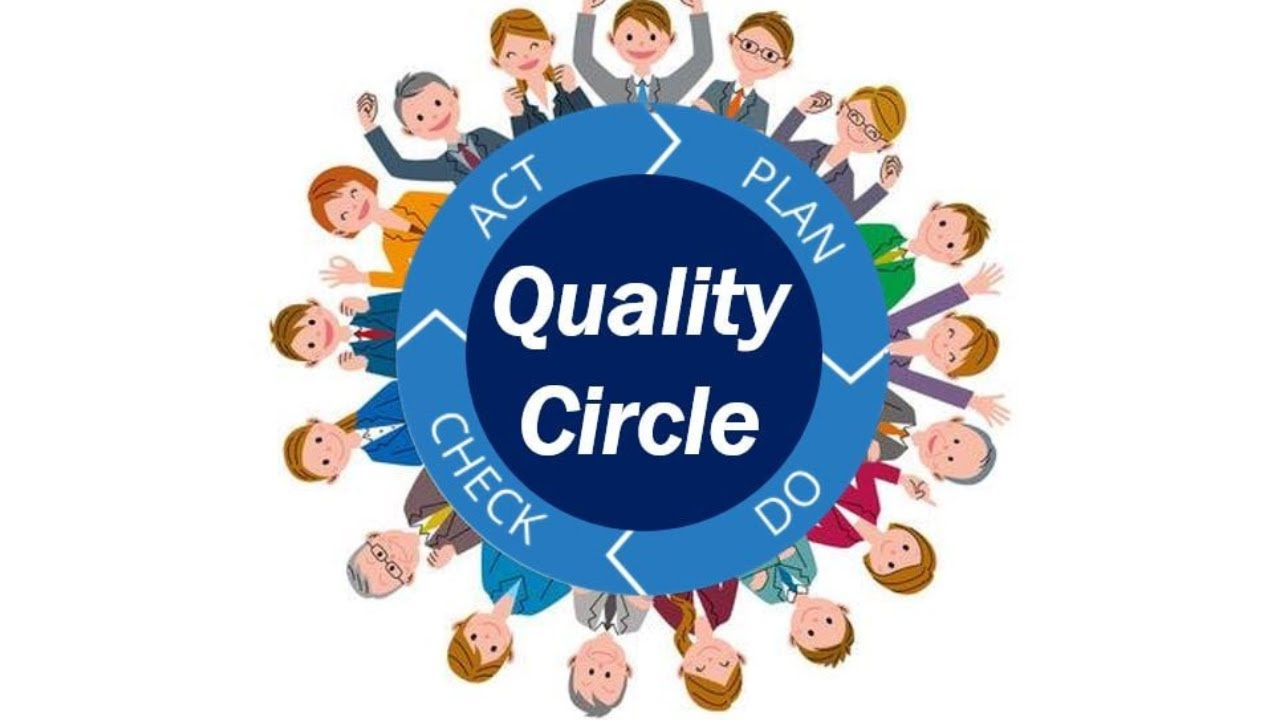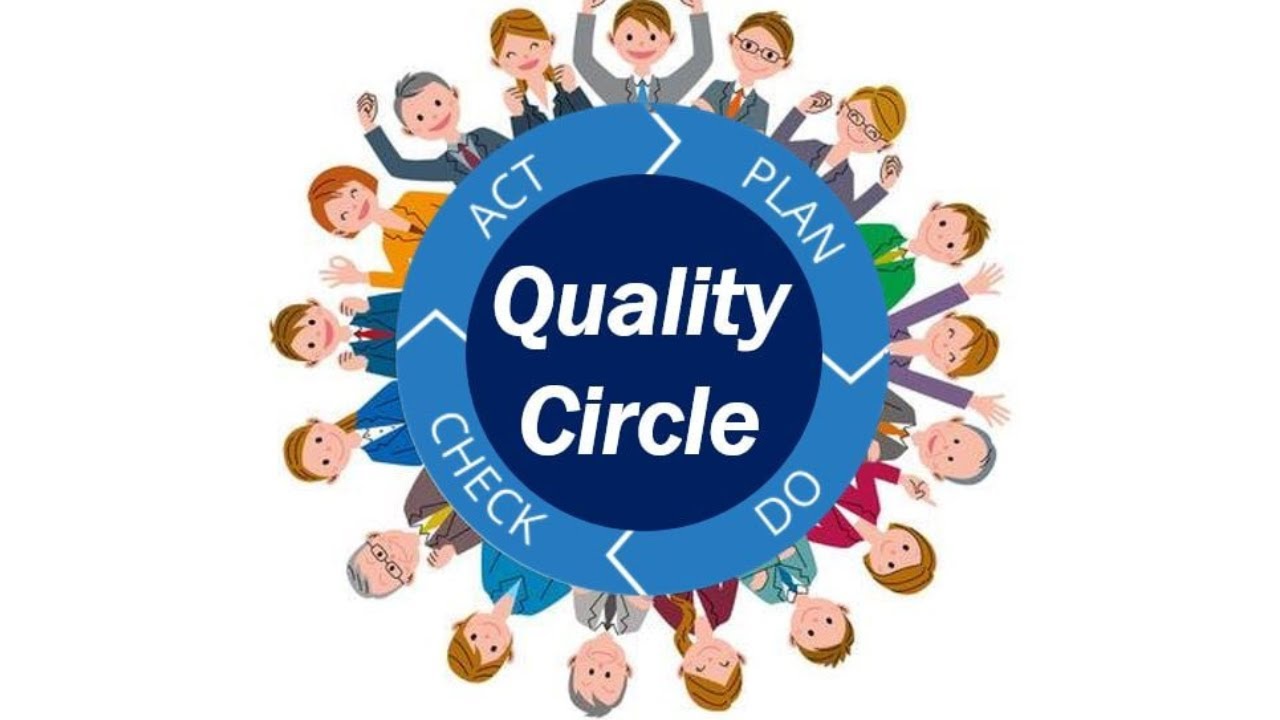क्वालिटी सर्किल: विनिर्माण में कर्मचारी सहभागिता के माध्यम से कार्यस्थल उत्कृष्टता को बढ़ाना
In today's competitive business landscape, organizations are continually seeking ways to improve efficiency, productivity, and overall performance. One methodology that has gained prominence in achieving these objectives is the Quality Circle (QC). Originating from Japan in the 1960s, the QC approach has since spread globally, revolutionizing the way companies engage their workforce to enhance quality and innovation.
What is a Quality Circle?
At its core, a Quality Circle is a small group of employees within an organization who voluntarily come together to identify, analyze, and solve work-related problems. These circles are usually comprised of individuals from various departments or functions, bringing diverse perspectives and insights to the table. The primary goal of a Quality Circle is to empower employees to take ownership of their work processes and contribute to continuous improvement initiatives.
Click Here to Download Readymade Editable Toolkits & Templates on Quality Assurance/Quality Control, Lean Six Sigma, Risk Management, Lean Manufacturing, Six Sigma, ISO 9001, ISO 14001, ISO 22000, ISO 45001, FSSC 22000, HSSE, Project Management etc.
Key Principles and Components
Quality Circles operate on several fundamental principles and incorporate various components to drive meaningful change within an organization:
- Voluntary Participation: Participation in Quality Circles is entirely voluntary, fostering a sense of ownership and commitment among members. This voluntary aspect ensures that individuals are motivated and engaged in the problem-solving process.
- Small Group Dynamics: Quality Circles typically consist of 5 to 10 members, facilitating effective communication, collaboration, and decision-making. Small group dynamics enable members to express their ideas freely and contribute actively to discussions.
- Structured Problem-Solving Approach: Quality Circles follow a structured approach to problem-solving, often employing methodologies such as the PDCA (Plan-Do-Check-Act) cycle or DMAIC (Define, Measure, Analyze, Improve, Control) process. This systematic approach helps teams identify root causes, develop solutions, and implement effective countermeasures.
- Focus on Continuous Improvement: Continuous improvement lies at the heart of Quality Circles. Members are encouraged to seek incremental enhancements to processes, products, or services, driving efficiency, quality, and customer satisfaction.
- Management Support and Empowerment: For Quality Circles to thrive, management support is crucial. Management provides the necessary resources, guidance, and encouragement to empower employees and facilitate the implementation of suggested improvements.
Benefits of Quality Circles
Implementing Quality Circles within an organization can yield a myriad of benefits, including:
- Enhanced Employee Engagement: Quality Circles empower employees by involving them in decision-making processes and problem-solving activities, leading to increased job satisfaction and morale.
- Improved Quality and Productivity: By identifying and addressing process inefficiencies, Quality Circles contribute to higher product and service quality, as well as improved productivity and efficiency.
- Innovation and Creativity: Quality Circles serve as platforms for fostering innovation and creativity within the workforce. By encouraging brainstorming and collaboration, teams can develop novel solutions to complex problems.
- Cost Reduction: Through the identification of waste, defects, and inefficiencies, Quality Circles help organizations streamline processes and reduce costs associated with rework, scrap, and resource utilization.
- Stronger Teamwork and Communication: Participating in Quality Circles fosters stronger teamwork and communication among employees from different departments or functional areas. This collaboration strengthens organizational cohesion and facilitates knowledge sharing.
- Cultural Transformation: Over time, the adoption of Quality Circles can lead to a cultural transformation within an organization, where a continuous improvement mindset becomes ingrained in the company's DNA.
Challenges and Considerations
While Quality Circles offer numerous benefits, implementing and sustaining them within an organization can pose certain challenges:
- Resource Constraints: Limited resources, including time, budget, and personnel, can impede the successful implementation of Quality Circles.
- Resistance to Change: Some employees may resist participating in Quality Circles due to fear of change, skepticism about the process, or concerns about additional workload.
- Lack of Management Support: Without strong support and commitment from management, Quality Circles may struggle to gain traction or achieve meaningful results.
- Sustainability: Sustaining the momentum of Quality Circles over the long term requires ongoing effort, leadership, and reinforcement from management.
- Cultural Barriers: In organizations with hierarchical or authoritarian cultures, fostering employee empowerment and participation may encounter resistance or cultural barriers.
Click Here to Download Readymade Editable Toolkits & Templates on Quality Assurance/Quality Control, Lean Six Sigma, Risk Management, Lean Manufacturing, Six Sigma, ISO 9001, ISO 14001, ISO 22000, ISO 45001, FSSC 22000, HSSE, Project Management etc.
Best Practices for Success
To overcome these challenges and maximize the effectiveness of Quality Circles, organizations can adopt the following best practices:
- Top-Down Support: Leadership commitment and visible support are essential for the success of Quality Circles. Management should actively champion the initiative and provide the necessary resources and encouragement.
- Training and Development: Providing training and development opportunities for Quality Circle members in problem-solving methodologies, teamwork, and communication skills can enhance their effectiveness and confidence.
- Recognition and Rewards: Recognizing and rewarding the contributions of Quality Circle members fosters motivation and reinforces a culture of continuous improvement.
- Clear Objectives and Expectations: Clearly defining the objectives, scope, and expectations of Quality Circles helps align efforts with organizational goals and ensures focus on high-impact improvements.
- Regular Communication and Feedback: Establishing open channels of communication and providing constructive feedback facilitate engagement and commitment among Quality Circle members.
- Integration with Organizational Goals: Integrating Quality Circles with broader organizational goals, such as quality improvement initiatives or strategic objectives, enhances alignment and relevance.
Conclusion
Quality Circles represent a powerful mechanism for driving continuous improvement, enhancing employee engagement, and fostering a culture of innovation within organizations. By harnessing the collective intelligence and creativity of their workforce, companies can achieve higher levels of quality, productivity, and competitiveness in today's dynamic business environment. While challenges may arise in the implementation process, organizations that prioritize management support, employee empowerment, and a commitment to excellence stand to reap the substantial rewards offered by Quality Circles.
The following are some selected Industry Courses to start today!
1. ISO MANAGEMENT SYSTEMS IMPLEMENTATION & INTERNAL AUDITOR COURSES
- Integrated Management Systems (IMS) Implementation Course
- FSSC 22000 Implementation & Internal Auditor Course
- ISO 22000 Implementation & Internal Auditor Course
- ISO 22000 (HACCP, PRPs, oPRPs and CCPs) for Food Safety
- Certified Internal Auditor (CIA) Training Course
- ISO 9001 (QMS) Implementation & Internal Auditor Course
- ISO 14001 (EMS) Implementation & Internal Auditor Course
- ISO 45001 (OH&SMS) Implementation & Internal Auditor Course
- Food Fraud Mitigation & Defense Certification Course
2. ISO LEAD AUDITOR COURSES
- ISO 50001 Energy Management Systems (EnMS) Lead Auditor Course
- ISO 22000 Food Safety Management Systems (FSMS) Lead Auditor Course
- ISO 14001 Environmental Management Systems (EMS) Lead Auditor Certification Course
- ISO 45001 Occupational Health & Safety Management Systems (OH&MS) Lead Auditor Certification Course
- ISO 9001 Quality Management Systems (QMS) Lead Auditor Course
3. MANUFACTURING, QUALITY, PRODUCT DEVELOPMENT, OPERATIONS & SUPPLY CHAIN MANAGEMENT
- Good Manufacturing Practices (GMP)
- ISO/IEC 17025 – Laboratory Management Systems Certification
- Essentials of Engineering Project Management
- Construction Project Management
- Essentials of Contract Management
- Environmental Impact Assessment (EIA)
- Laboratory Management Systems (LMS) Essentials
- Certified Manager of Quality & Process Excellence
- Essentials of Facility Management
- Agile Project Management
- Engineering Codes, Standards and Specifications
- Industrial Process Safety
- Fundamentals of Risk Management
- Industry 4.0: Digital Transformation in Manufacturing
- Manufacturing Operations Management Certification Course
- Total Quality Management (TQM) Certification Course
- Supply Chain Management (SCM) MasterClass
- Certified Lean Management Professional™ (CLMP™)
- Six Sigma for Business and Manufacturing Process Improvement
- Product Management Certification Course
- Statistical Process Control (SPC) and Data Analysis Course
- Quality Assurance for Business and Operational Excellence
- Lean Six Sigma Yellow Belt Certification Course
- Essentials of Facility Management
- Agile Project Management
- Engineering Codes, Standards and Specifications



